The Downfall of the Mighty Lydian King Candaules in Art
Suppose you are not satisfied with any of the historical or fantasy dramas out there lately where all kinds of slander, deception, and politicking...
Erol Degirmenci 2 March 2023
It is most common to talk about paintings or sculptures inspired by a piece of literature. Yet, this relationship between arts is not unidirectional. In truth, many writers wrote wonderful descriptions of artworks. In art history, this is called ekphrasis. Among those gifted authors is William Shakespeare. The playwright from Stratford-upon-Avon granted us one magnificent example in his long poem, Lucrece. There, he beautifully described a painting about the fall of Troy.
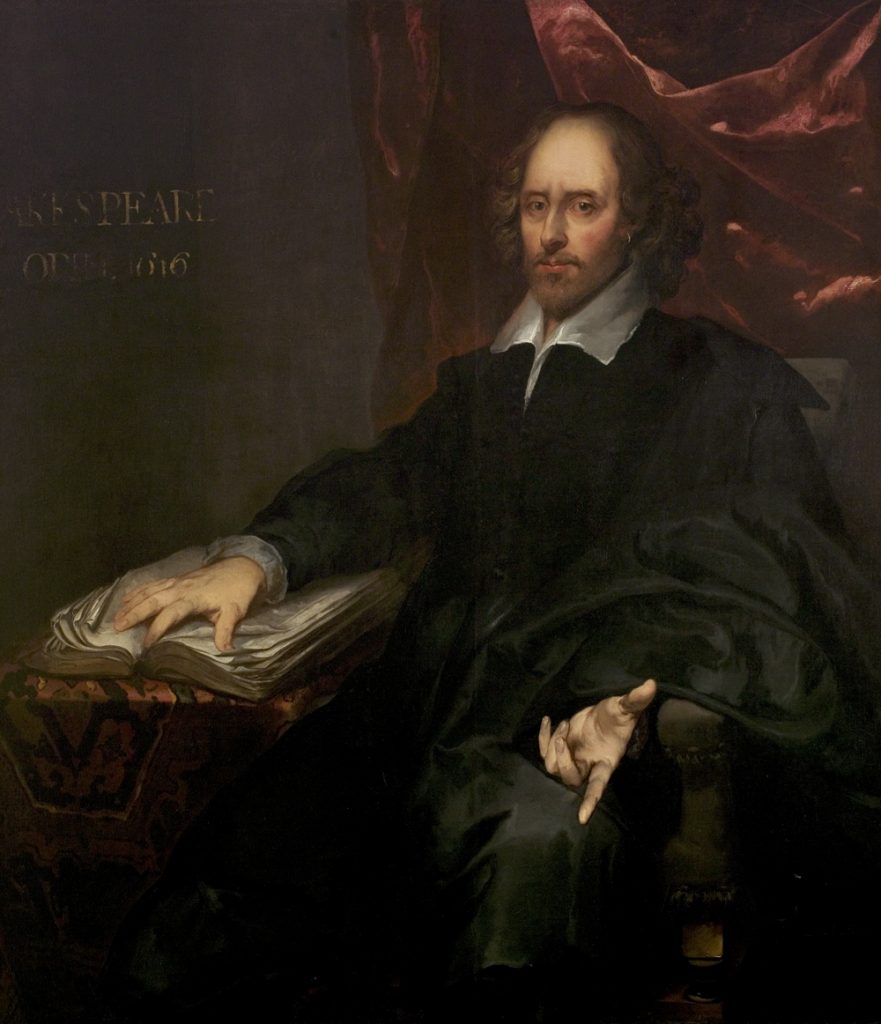
Pieter Borsseler (attributed), The Chesterfield Portrait of William Shakespeare (1564–1616), c. 1679, Shakespeare Birth-place Trust, Stratford-upn-Avon, UK.
First, let us explain what an ekphrasis is. Although many have defined the term, it basically means the verbal representation of an artwork. Moreover, it can be a poetic description that allows the reader to feel as if they had the painting right in front of them. As such, it is a dialogue between two mediums. Now, there are types of ekphrasis depending on whether the object exists outside of the text, or not. Pimentel talks about the “notional ekphrasis”, which refers to descriptions of artworks that are just in that writing, and not as an actual physical object. This is exactly the kind of example that can be found in Shakespeare’s Lucrece.
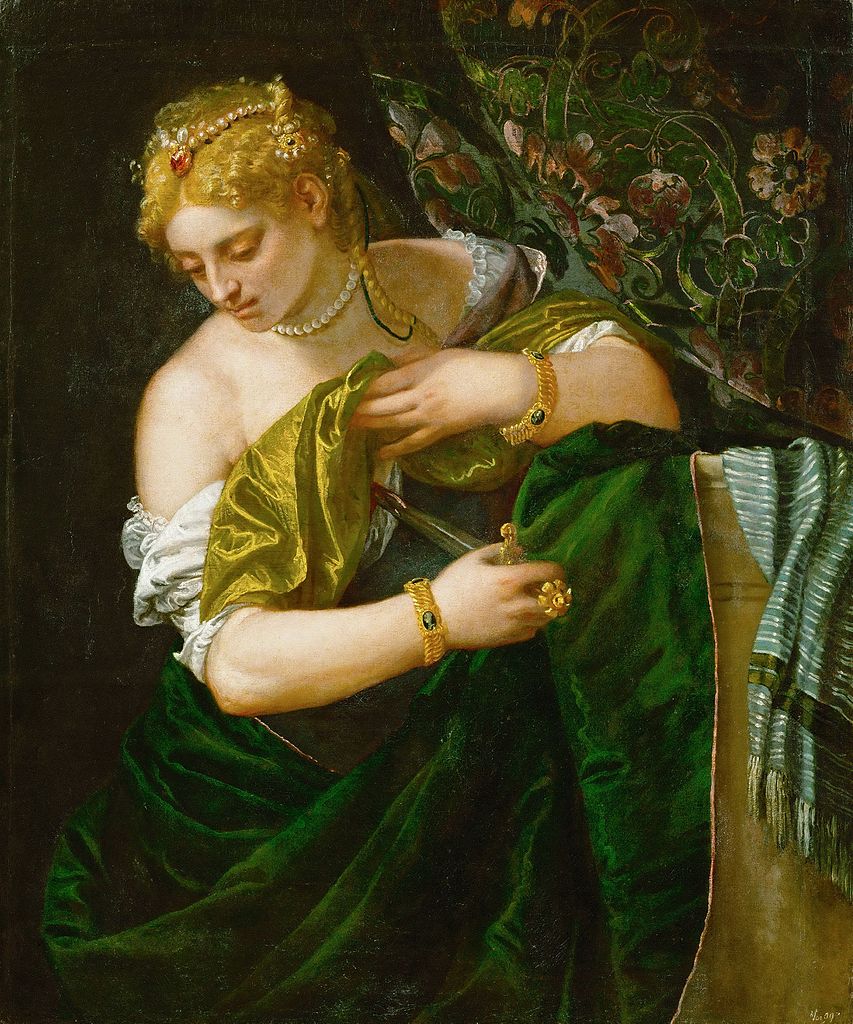
Paolo Veronese, Lucretia, 1580-1583, Kunsthistorisches Museum, Vienna, Austria.
While Shakespeare is most commonly admired for his plays, he also wrote long narrative poems. One of them narrates the tragic story of Lucrece or Lucretia. This story takes place in a time when Rome was a kingdom, at the beginning of the 6th century BCE. She was the wife of the first consul, Collatine, in Rome. Yet, she remained chaste, something her husband loved to brag about. Let us remember that the “pureness” of a woman was her most important attribute. Upon learning this, Tarquin began to desire her. Taking advantage of her innocence and hospitality, he got into her home while Collatine was somewhere else. After considering the consequences of his future actions, he decided to go ahead. Once in her room, he blackmailed Lucrece and raped her.
What win I if I gain the thing I seek?
A dream, a breath, a froth of fleeting joy.
Who buys a minute’s mirth to wail a week
Or sells eternity to get a toy?
For one sweet grape who will the vine destroy?
Or what fond beggar, but to touch the crown,
Would with the scepter straight be strucken down?Lucrece (211-217), 1594. The Folger Shakespeare.
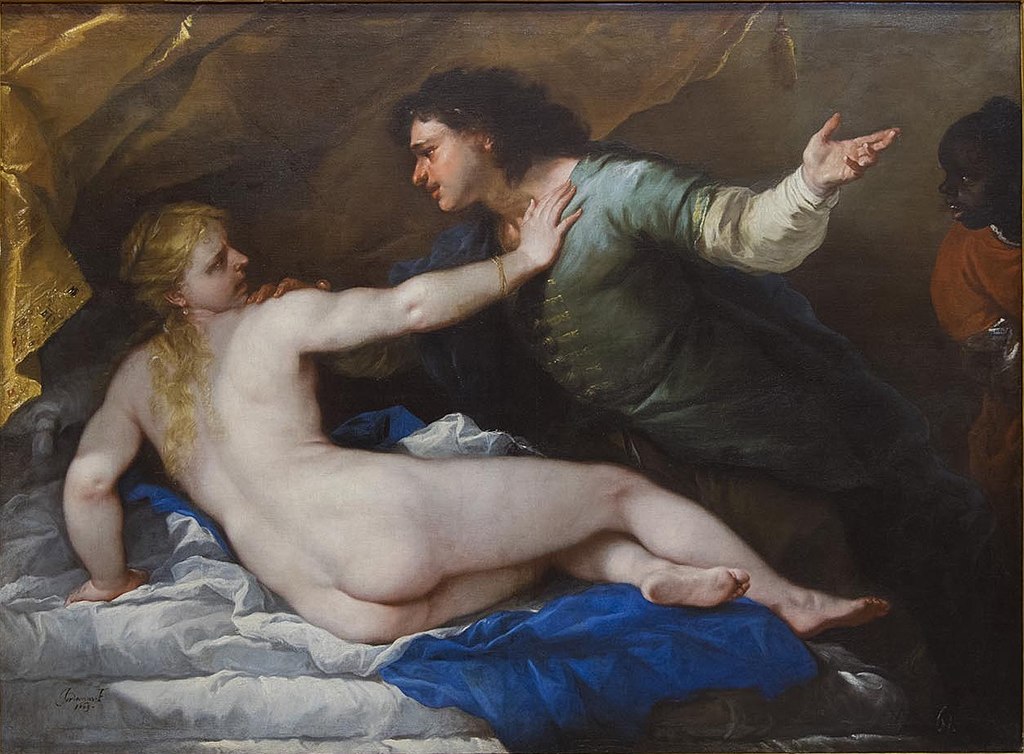
Luca Giordano, The Rape of Lucretia, 1663, Museo di Capodimonte, Naples, Italy.
“Lucrece,” quoth he, “this night I must enjoy thee.
If thou deny, then force must work my way,
For in thy bed I purpose to destroy thee.
That done, some worthless slave of thine I’ll slay,
To kill thine honor with thy life’s decay,
And in thy dead arms do I mean to place him,
Swearing I slew him, seeing thee embrace him.”Lucrece (512-518), 1594. The Folger Shakespeare.
This poem is considered a minor epic since it deals with major political shifts. See, when Tarquin raped Lucrece, she died of suicide due to the immense shame she felt. But, being the prince, his actions tainted the crown. Actually, this crime is considered the catalyst for the change from the kingdom to the republic of Rome. Indeed, it changed the course of history.
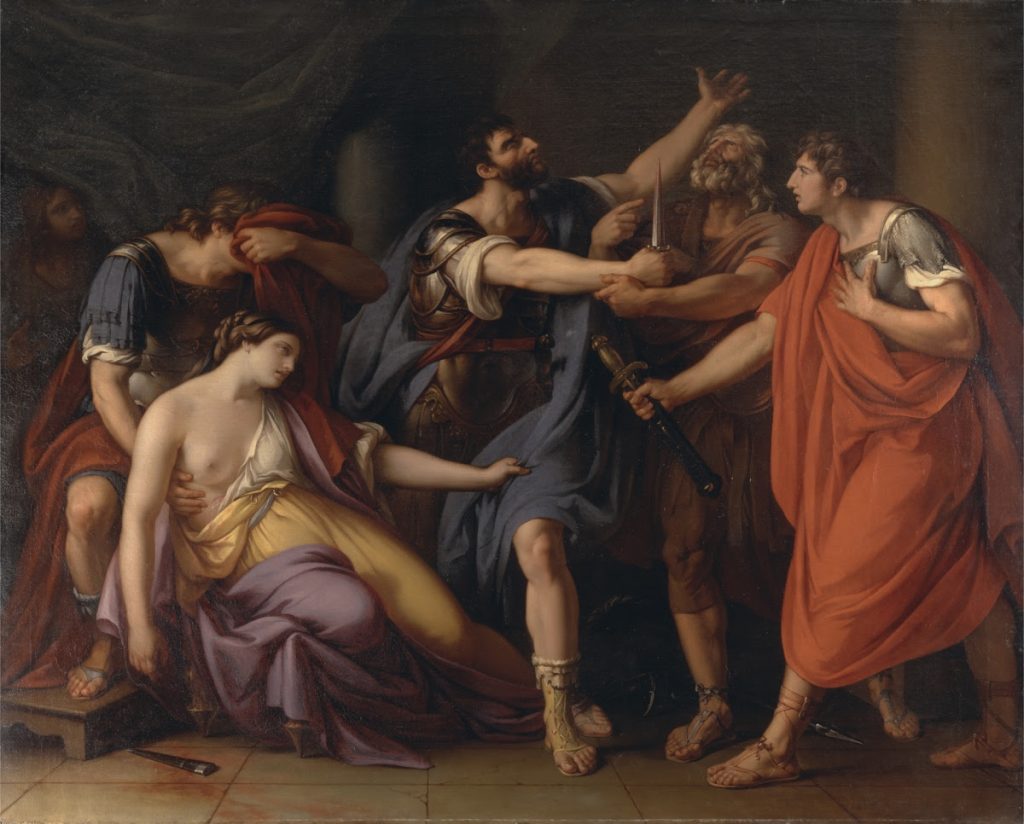
Gavin Hamilton, The death of Lucretia, 1763-1767, Yale Center for British Art, New Haven, CT, USA.
Throughout the centuries, the rape of Lucrece was a widely popular theme for Western painters. Truly, there are dozens of versions from the greatest masters. Of course, most of them chose the moment of Tarquin’s attack or the moment of her death. Yet, there is a scene right in the middle of these moments where Shakespeare made his ekphrasis.
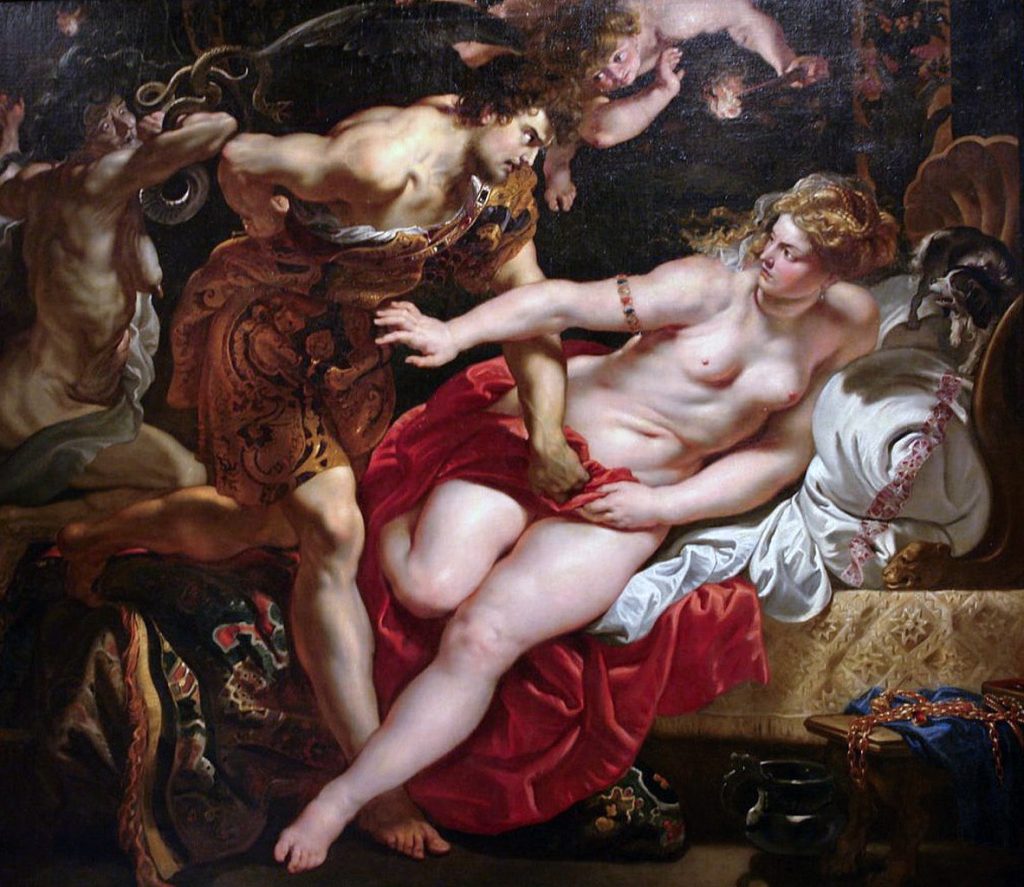
Peter Paul Rubens, The rape of Lucretia, 1609, The State Hermitage Museum, Saint Petersburg, Russia.
Afterward, the poem tells the consequences of the assault. As Tarquin left, Lucrece remained to deal with the rape. Tragically, it is then that she decided to end her life. However, she waited for her husband to return. Meanwhile, she reflected on the unequal treatment women suffer in these situations. Then, she encountered a painting about the fall of Troy. Here, Shakespeare made a vivid narrative of what is happening in the image. These are only some fragments:
At last she calls to mind where hangs a piece
Of skillful painting, made for Priam’s Troy,
Before the which is drawn the power of Greece,
For Helen’s rape the city to destroy,
Threat’ning cloud-kissing Ilion with annoy,
Which the conceited painter drew so proud
As heaven, it seemed, to kiss the turrets bowed.Lucrece (1366-1372), 1594. The Folger Shakespeare.
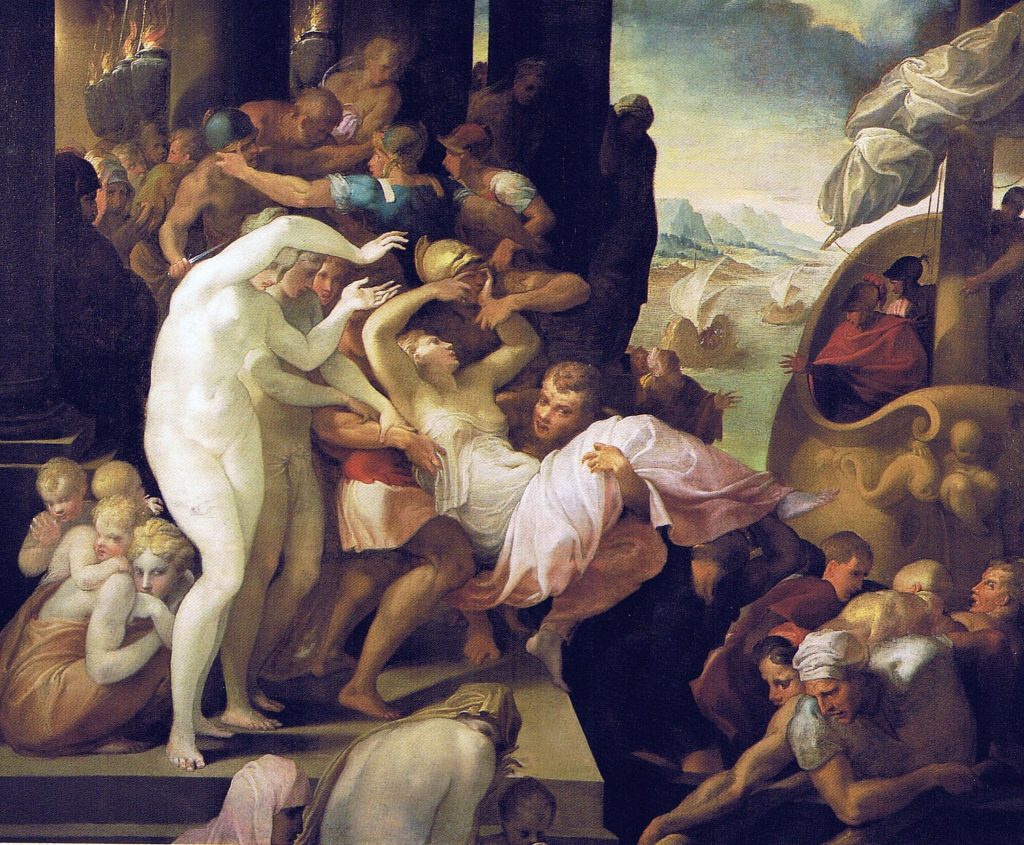
circle of Francesco Primaticcio, The Rape of Helen, c. 1530–1539, Bowes Museum, Barnard Castle, England, UK.
In Ajax and Ulysses, O, what art
Of physiognomy might one behold!
The face of either ciphered either’s heart,
Their face their manners most expressly told.
In Ajax’ eyes blunt rage and rigor rolled,
But the mild glance that sly Ulysses lent
Showed deep regard and smiling government.Lucrece (1394-1400), 1594. The Folger Shakespeare.
Here one man’s hand leaned on another’s head,
His nose being shadowed by his neighbor’s ear;
Here one being thronged bears back, all boll’n and red;
Another, smothered, seems to pelt and swear;
And in their rage such signs of rage they bear
As, but for loss of Nestor’s golden words,
It seemed they would debate with angry swords.Lucrece (1415-1421), 1594. The Folger Shakespeare.
But the painting of Troy is not in the poem for the sake of it. In fact, it serves as a parallel to Lucrece’s story. After all, the entire city of Troy had to pay for Paris’ rape of Helen. In this way, our protagonist empathized with the Trojans and especially with Hecuba, queen of Troy. As Lucrece watches the painting, she says,
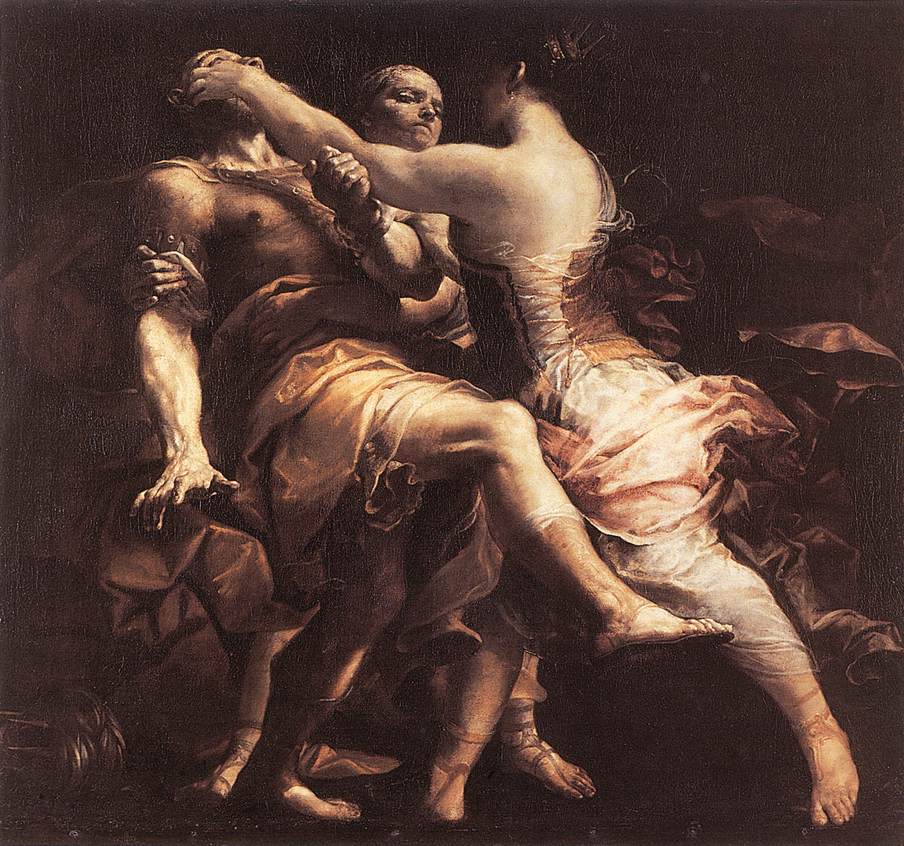
Guiseppi Maria Crespi, Hecuba Kills Polymestor, 18th century, Royal Museum of Fine Arts, Brussels, Belgium.
Why should the private pleasure of some one
Become the public plague of many more?
Let sin, alone committed, light alone
Upon his head that hath transgressèd so;
Let guiltless souls be freed from guilty woe.
For one’s offense why should so many fall,
To plague a private sin in general?
“Lo, here weeps Hecuba, here Priam dies,
Here manly Hector faints, here Troilus swounds,
Here friend by friend in bloody channel lies,
And friend to friend gives unadvisèd wounds,
And one man’s lust these many lives confounds.
Had doting Priam checked his son’s desire,
Troy had been bright with fame and not with fire.Lucrece (1478-1491), 1594. The Folger Shakespeare.
Many have compared poetry and painting. In Lucrece, Shakespeare uses his words to voice the Trojan image.
“Poor instrument,” quoth she, “without a sound,
I’ll tune thy woes with my lamenting tongue,
And drop sweet balm in Priam’s painted wound,
And rail on Pyrrhus, that hath done him wrong,
And with my tears quench Troy, that burns so long,
And with my knife scratch out the angry eyes
Of all the Greeks that are thine enemies.”Lucrece (1464-1470), 1594. The Folger Shakespeare.
In truth, there is no actual painting. Nevertheless, Shakespeare’s example is of extraordinary quality. Even if it does not exist, his words let the reader imagine it in their mind.
Mowat, Barbara and Werstine, Paul. “About Shakespeare’s Lucrece”. The Folger Shakespeare. Accessed on 17 July 2022.
Pimentel, Luz Aurora. “Ecfrasis y lecturas iconotextuales”. 2003, UNAM. Accessed on 20 July 2022.
DailyArt Magazine needs your support. Every contribution, however big or small, is very valuable for our future. Thanks to it, we will be able to sustain and grow the Magazine. Thank you for your help!